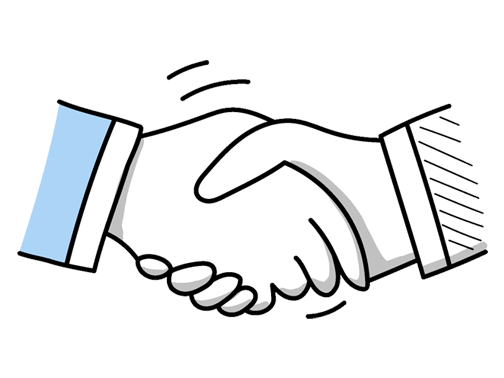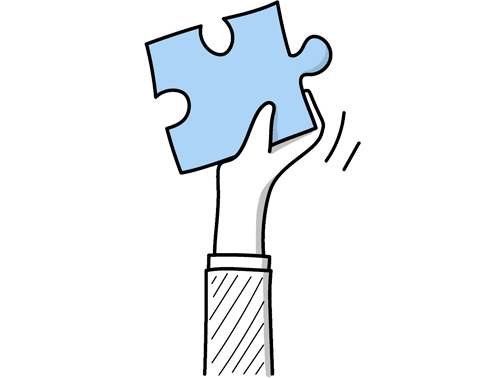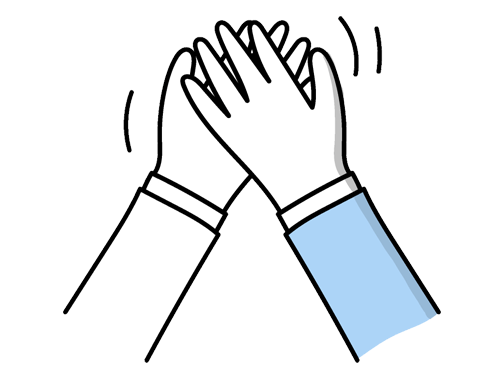Art Teacher Interview Questions (2025 Guide)
Find out common Art Teacher questions, how to answer, and tips for your next job interview
Practice Interviews Online - Identify your strengths and weakness in a realistic Art Teacher mock interview, under 10 minutes
Practice Now »Art Teacher Interview Questions
Hiring managers ask this question to see if you can recognize and meet the diverse needs of your students. You need to explain that you assess individual learning styles and use a variety of teaching techniques to ensure every student can engage and succeed.
Example: I tailor my lessons to suit how each student learns best, mixing hands-on activities with visual and verbal instructions. For example, I might use step-by-step demonstrations for those who learn by watching, while encouraging discussion and reflection for others. This way, every student feels engaged and supported, allowing them to explore their creativity in a way that resonates personally.
Interviewers ask this to see how you diversify learning and engage students with various techniques. You should explain your approach to blending mediums to foster creativity and adapt to different skill levels.
Example: In my classes, I like to mix things up by introducing students to various materials—like charcoal for sketching, watercolours for exploring colour, and clay for hands-on sculpture. This variety helps keep lessons fresh and lets students discover which medium resonates with them. For example, a recent project had students combine collage with paint, encouraging creativity and experimentation beyond traditional boundaries.
This question aims to assess how you foster student engagement and critical thinking in art discussions. In your answer, emphasize encouraging open dialogue, guiding respectful feedback, and creating a safe space where all students feel comfortable sharing their perspectives.
Example: I encourage students to share their thoughts openly by creating a relaxed, respectful space where every opinion matters. We often look at different artworks together, discussing what stands out and why. Sometimes, I ask them to compare styles or tell stories the art inspires, which helps them articulate ideas and learn from each other. This way, critique becomes a collaborative, enjoyable part of their learning.
Questions like this assess your ability to make complex subjects relatable and interesting to students. You need to highlight your use of interactive activities, visual aids, and connecting art history to students’ own experiences to keep them engaged.
Example: I like to bring art history to life by connecting it to students’ own experiences and contemporary culture. For example, exploring how modern street art relates to movements like Pop Art makes the history feel relevant. I also encourage hands-on projects inspired by different periods, so students learn by creating, not just listening. This approach helps them see art theory as something dynamic and meaningful, not just facts to memorize.
Questions like this evaluate your ability to observe and measure growth in creativity and technique over time. You need to explain that you use a combination of portfolio reviews, student reflections, and tailored feedback to track and support each student's artistic development.
Example: I usually look at how students explore different techniques and express their ideas over time, rather than just the finished piece. For example, noticing a student experimenting more confidently with colour or composition shows growth. I also encourage self-reflection, so they can identify their own progress and challenges. This approach helps me support them in developing their skills in a meaningful, personalised way.
Hiring managers ask this question to understand how you convey essential skills and tailor your teaching to diverse learners. You need to explain that you introduce fundamental techniques like shading and perspective clearly and adapt lessons to support both beginners and advanced students effectively.
Example: I focus on building strong foundations, like sketching and shading, then tailor lessons based on each student’s confidence and style. Some might explore watercolors to understand blending, while others experiment with charcoal for texture. I encourage trying different mediums to find what resonates, whether it’s printmaking, collage, or clay, helping students express themselves while developing a broad skill set.
Employers ask this to see how you engage diverse learners and adapt your teaching to maintain enthusiasm. You need to explain how you use varied materials and personalized projects to connect with students’ interests and creativity.
Example: I focus on connecting lessons to students’ interests and real-life experiences, making art feel relevant and personal. For example, I might explore street art styles or local culture, encouraging students to express their own stories. Incorporating a mix of techniques and media keeps things fresh and allows everyone to find their own voice. This balance helps maintain enthusiasm and creativity throughout the course.
This interview question aims to assess your commitment to continuous learning and how you actively improve your teaching practice. You need to mention specific professional development activities related to art teaching and explain how they enhanced your skills or classroom methods.
Example: I regularly attend workshops and conferences focused on contemporary art techniques and classroom engagement strategies. Recently, I completed a course on digital art tools, which has helped me integrate technology more effectively in lessons. Staying connected with art education networks also keeps me informed about new resources and teaching approaches, ensuring my students receive a rich, evolving learning experience.
This interview question helps the employer see that you are committed to growing as an art teacher and staying current with the best teaching methods. You should explain that you actively attend workshops or conferences, read up-to-date resources, and thoughtfully apply new ideas to improve your lesson plans.
Example: I make it a point to regularly read art education journals and follow online forums where teachers share fresh ideas and resources. Attending local workshops or gallery talks helps me see new approaches in practice. Reflecting on these insights allows me to adapt my lessons and keep them relevant, ensuring students are inspired by both traditional techniques and contemporary trends.
Employers ask this question to see how you actively improve your teaching and adapt to new methods. You should explain why you chose the workshop to meet a specific teaching goal, describe what changes you made in your lessons, and share how these changes benefited your students’ engagement or learning.
Example: I attended a workshop on using mixed media to engage different learning styles, aiming to make lessons more accessible. Since then, I’ve incorporated a variety of materials, which has noticeably boosted student creativity and confidence. One student who usually struggled with drawing found a passion for collage, which was rewarding to see. This experience reshaped how I plan lessons to nurture diverse talents in the classroom.
Hiring managers ask this question to see how you create an inclusive and dynamic classroom that keeps every student involved. You need to explain that you use varied teaching methods, set clear expectations, and adapt activities to meet different learning needs to ensure all students stay engaged and participate actively.
Example: I focus on creating a welcoming space where every student feels valued, using varied activities to spark interest and cater to different learning styles. When behaviour challenges arise, I stay calm and set clear expectations to keep things running smoothly. I also encourage collaboration and offer choices in projects, so students stay motivated and involved, whether they’re confident artists or just finding their footing.
This interview question is designed to see how you encourage teamwork and creativity among students. Explain a specific project where students worked together to create art, highlighting your role in facilitating collaboration and fostering a shared vision.
Example: One project I enjoyed was creating a large mural where each student contributed a small section inspired by their personal stories. It encouraged teamwork and allowed them to see how individual ideas come together into something bigger. The process sparked conversations and helped build a strong sense of community within the class, making the art and experience meaningful for everyone involved.
This question aims to understand how you create a supportive and effective learning space. You need to explain that you set clear rules early on, engage students with interactive art projects, and handle disruptions calmly using positive reinforcement.
Example: To create a positive classroom, I set clear guidelines from the start so everyone knows what’s expected. I keep students engaged by connecting lessons to their interests, like relating art techniques to music or films they enjoy. When disruptions happen, I address them calmly, focusing on understanding the cause rather than just reacting, which helps maintain respect and keeps the class moving smoothly.
Interviewers ask this question to understand how you value art’s impact on student growth and learning beyond academics. In your answer, emphasize that art nurtures creativity and critical thinking, supports emotional expression and self-awareness, and can be integrated across subjects to enrich a well-rounded education.
Example: Art opens up students’ imagination and encourages them to see the world from different perspectives, which sharpens their problem-solving skills. It’s not just about creating; it builds confidence and emotional intelligence too. I like to connect art with subjects like history or science, helping students make meaningful links and deepen their understanding, making learning more engaging and memorable overall.
This interview question is asked to understand how you create a classroom that nurtures creativity while maintaining clear expectations and structure. You need to explain how you encourage innovative thinking through flexible lesson plans, adapt activities to meet diverse skill levels, and provide constructive feedback that supports growth without limiting creativity.
Example: In my classroom, I set clear expectations while leaving plenty of room for students to explore their ideas. I adapt lessons to different learning styles, helping each student find their own creative voice. When giving feedback, I focus on encouraging progress and new directions rather than just corrections. For example, a student once transformed a “mistake” in their painting into a unique feature, which we celebrated as part of their artistic growth.
What they want to know is that you are dedicated to growing as an art teacher by staying updated with new trends and techniques. You need to say you plan to pursue further training, integrate new technologies like digital art tools, and create projects that engage all types of learners to improve student outcomes.
Example: My goal is to keep exploring new art methods and tools to bring fresh ideas into the classroom, like integrating digital media alongside traditional techniques. I also want to create lessons that truly connect with students, helping them express themselves and build confidence. Continuously learning helps me adapt so I can support each student's creativity and progress in meaningful ways.
What they want to understand is how proactive and engaged you are in continually developing your skills to inspire students effectively. You need to say that you regularly attend workshops, follow professional artists and art education forums, and experiment with new techniques to bring fresh ideas into your teaching.
Example: I make a point of exploring contemporary galleries and following active artists online to see what’s fresh in the art world. Attending workshops or local exhibitions helps me pick up new approaches that I can bring into the classroom. For example, recently I experimented with digital collage techniques after a community art event, which my students really enjoyed trying out themselves. Staying curious keeps my teaching vibrant and relevant.
Employers ask this question to assess your conflict resolution skills and ability to maintain a positive classroom environment. You need to describe a specific situation, explain how you listened to both sides, and show how you helped the students reach a respectful understanding.
Example: In one class, two students disagreed over a group project’s creative direction. I encouraged them to share their ideas openly and listen to each other. By guiding them to focus on common goals rather than differences, they found a way to combine their styles. It was rewarding to see their collaboration improve, turning tension into a shared accomplishment.
What they want to understand is how you motivate and connect with students to foster their love for art. You need to share a specific story where your guidance or approach helped a student discover or deepen their passion for art.
Example: In my previous role, I noticed one student was hesitant with their drawing. I encouraged them to explore art styles they enjoyed outside class, like street art, which really clicked with them. Over time, their confidence grew, and they began bringing their own ideas to projects. Seeing that spark develop reminded me how important it is to connect art with students’ interests to help passion flourish.
Employers ask this question to see if you can effectively blend traditional art teaching with modern technology, enhancing student engagement and creativity. You need to mention your experience with specific digital art tools and explain how you integrate them into lessons by adapting to different skill levels and combining digital and traditional methods.
Example: I’ve worked with tools like Adobe Creative Suite and Procreate, and I enjoy weaving them into lessons to engage students creatively. For example, I might have beginners explore simple digital sketching before moving on to more complex projects like digital collages. I tailor support based on each student’s comfort with technology, ensuring everyone feels confident and inspired to use these tools in their artistic process.
Employers ask this to see if you can organize resources efficiently and minimize disruptions during lessons. You need to say that you keep an inventory, prepare materials in advance, and create clear systems for students to access and return supplies.
Example: I stay organised by keeping an inventory of supplies and involving students in tidying up after projects. This not only helps maintain materials but also teaches responsibility. For example, I label storage clearly and rotate resources to ensure everything gets used. It’s about creating a system that’s easy to follow, so we spend more time creating and less time searching.
Hiring managers ask this to understand your core beliefs about teaching and how you inspire creativity in students. You need to say that you believe art education should nurture individual expression and critical thinking, guiding students to explore and develop their unique artistic voices.
Example: I believe art education should inspire creativity and confidence, giving students space to express themselves uniquely. My approach focuses on encouraging experimentation and personal storytelling through different mediums. For example, I once guided a student who was shy about their style to explore abstract painting, which helped them find their voice and enthusiasm. It’s about nurturing individual growth while building essential skills.
This interview question aims to see how you support creativity and personal growth in students. You need to say that you create a safe, open environment and use diverse projects to help each student explore and showcase their unique style.
Example: I encourage students to explore their own ideas by providing a variety of materials and techniques, allowing them to find what resonates personally. I celebrate their unique perspectives, whether it’s through abstract shapes or personal stories in their work. For example, a student once turned a simple sketch into a vivid reflection of their cultural background, which really showed me how art can be a powerful way to express individuality.
Questions like this assess your ability to maintain a positive learning environment and manage classroom dynamics effectively. You need to say that you remain calm, set clear expectations, and use creative, respectful strategies to redirect behavior without discouraging students.
Example: When disruption arises, I stay calm and address it quietly to avoid breaking the creative flow. I find that understanding the cause—whether frustration or boredom—helps me adapt the task or offer support. Once, a student was restless, so I gave them a more hands-on role, which refocused their energy positively. Creating a respectful, engaging environment keeps most issues at bay and helps students stay invested in their work.
Hiring managers ask this question to see how well you work with others to enhance your teaching, which is vital in creating a supportive learning environment. You need to explain how you actively share ideas with colleagues, attend or organize collaborative meetings, and are open to feedback that helps you improve your art lessons and boost student engagement.
Example: I regularly exchange ideas with fellow teachers, discussing what’s worked well in our classrooms and exploring new approaches together. For example, I recently collaborated on a cross-disciplinary project that enriched my art lessons and sparked more student engagement. I value honest feedback, which helps me refine my methods and better support my students. Learning from others keeps my teaching fresh and more effective.
Ace your next Art Teacher interview with even more questions and answers
Common Interview Questions To Expect
The interviewer is looking for a brief overview of your background, experience, and skills relevant to the position. Focus on your education, work experience, and passion for art education.
Example: Sure! I have a degree in Fine Arts and have been teaching art for the past 5 years. I am passionate about inspiring creativity in my students and helping them develop their artistic skills. I believe art education is crucial for fostering self-expression and critical thinking.
The interviewer is looking for examples of problem-solving skills, conflict resolution abilities, and how you handle challenges in the workplace. Answers should demonstrate your ability to overcome obstacles effectively.
Example: Sure! One challenge I faced was when a student in my class was consistently disruptive and disrespectful towards me and their classmates. I addressed the issue by having a one-on-one conversation with the student to understand the root of their behavior and worked with them to come up with a plan for improvement. By showing empathy and setting clear expectations, I was able to successfully resolve the conflict and create a more positive learning environment for everyone.
Interviewers are looking for honesty, professionalism, and a positive attitude in your response. You can mention career growth, seeking new challenges, or a desire for a change in work environment.
Example: I left my last job because I felt like I had reached a plateau in my career and was looking for new challenges to continue growing as an art teacher. I wanted to explore different teaching methods and work in a new environment to expand my skills and knowledge in the field. Overall, I am excited about the opportunity to bring my experience and passion for art education to a new school.
Interviewers are looking for examples of how you stay calm and focused under pressure, how you prioritize tasks, and how you communicate effectively with others during stressful situations.
Example: I handle pressure by staying organized and making to-do lists to prioritize tasks. I also take deep breaths and stay calm to focus on the task at hand. I communicate with my colleagues to delegate tasks and work together to meet deadlines.
The interviewer is looking for questions that show interest in the company, the role, and how the candidate can contribute. Asking about company culture, team dynamics, and future projects are good options.
Example: Yes, I was wondering about the school's approach to incorporating technology in the art curriculum. Also, could you tell me more about the collaboration opportunities with other teachers and departments? Lastly, I'm curious about any upcoming art events or projects that I could potentially be involved in.
Company Research Tips
The company's website is a goldmine of information. Look for the 'About Us' section to understand the company's history, mission, and values. Check out the 'News' or 'Blog' section to stay updated with the latest happenings and achievements. If the school has a specific art program, make sure to understand its objectives and curriculum. This will help you align your teaching philosophy with the school's art program.
Tip: Pay special attention to the language and tone used on the website. This can give you insights into the company culture.
Social media platforms like LinkedIn, Facebook, Twitter, and Instagram can provide valuable insights about the company. You can learn about the school's culture, events, and community involvement. Look for any art-related posts to understand the kind of art projects the students are involved in. This can give you an idea of the school's approach towards art education.
Tip: Follow the company's social media pages to stay updated with their latest posts. Engage with their content to show your interest.
Websites like Glassdoor provide reviews from current and former employees. This can give you a sense of the work environment, management style, and employee satisfaction. Look for reviews from other teachers to understand their experiences. However, take these reviews with a grain of salt as they can be biased.
Tip: Look for common themes in the reviews. If a particular issue is mentioned repeatedly, it's likely a genuine concern.
Reach out to current or former employees of the school. They can provide firsthand insights that you may not find online. If you don't know anyone directly, use LinkedIn to find connections. Ask them about the school's culture, expectations, and the interview process. This can give you a competitive edge during the interview.
Tip: Be respectful and professional when reaching out to people. Make sure to thank them for their time and insights.
Curveball Questions
How to respond to the silly questions where there's no right answer.
This question is meant to gauge your creativity and ability to think outside the box. Common answers include flying, invisibility, and telekinesis. An answer that ties the superpower to a specific skill or quality needed for the role would stand out.
Example: If I could have any superpower, I would choose the ability to time travel. As an art teacher, being able to go back in time and learn from the great masters would greatly enhance my teaching abilities and inspire my students.
This question is meant to assess your self-awareness and how you perceive yourself. Common answers include blue for calmness, red for passion, and green for growth. An answer that connects the chosen color to personal experiences or qualities would stand out.
Example: If I were a color, I would be purple. Purple represents creativity and individuality, two qualities that I strive to embody in both my personal and professional life.
This question is meant to assess your knowledge of history and your ability to imagine different scenarios. Common answers include the Renaissance for its artistic flourishing, the future for its technological advancements, and the 1920s for its cultural revolution. An answer that ties the chosen time period to a specific aspect of art history or theory would stand out.
Example: If I could live in any time period, I would choose the Baroque era. The dramatic lighting and emotional intensity of Baroque art have always fascinated me, and I would love to experience it firsthand.
This question is meant to assess your understanding of different art styles and movements. Common answers include the Mona Lisa for its enigmatic smile, Starry Night for its emotional depth, and The Persistence of Memory for its surrealism. An answer that connects the chosen artwork to personal values or experiences would stand out.
Example: If I were a work of art, I would be The Great Wave off Kanagawa by Hokusai. The power and beauty of nature depicted in the painting resonate with my own appreciation for the natural world and its ability to inspire creativity.
This question is meant to assess your knowledge of art history and your ability to appreciate different artistic styles. Common answers include Leonardo da Vinci for his versatility, Frida Kahlo for her personal expression, and Banksy for his social commentary. An answer that explains how the collaboration would benefit your own artistic practice or teaching methods would stand out.
Example: If I could collaborate with any artist, I would choose Yayoi Kusama for her innovative use of color and pattern. Working with her would push me out of my comfort zone and inspire me to explore new ways of engaging with my students through art.
What to wear to an Art Teacher interview
- Smart casual attire
- Comfortable, clean shoes
- Avoid overly bright colours
- Wear minimal jewelry
- Neatly styled hair
- Light, natural makeup
- Avoid jeans and t-shirts
- Carry a portfolio of your work
- Avoid heavy perfumes
- Wear a watch to show punctuality





